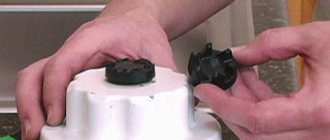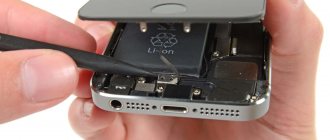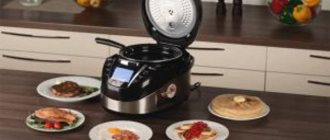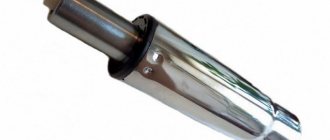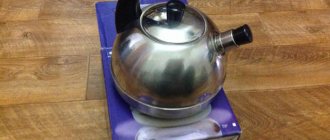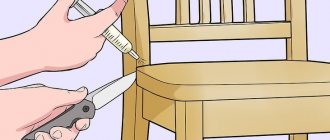The shelves of household appliance stores are replete with various types of kettles that operate using electricity and have a self-shut-off function. But many owners of gas stoves remain fans of kettles that can be heated on the stove, and special preference is always given to models with a whistle.
At the moment, the market offers a large and varied range of kitchen products and teapots are no exception.
Peculiarities
The modern market offers a wide selection and range of teapots. Many people prefer to use an electric appliance, but there are also those who prefer a regular kettle. The water in it is heated on a gas, electric or induction stove. Very popular today is a kettle with a whistle, which signals that the water is already boiling.
It is not uncommon for a whistle to fail. It can either be replaced or repaired.
Before proceeding with the instructions for repairing the whistle if it breaks, you need to get acquainted with the types of kettles equipped with this device. Today, there are many different models of this attribute, and different materials are used for its production. Unfortunately, it is impossible to set the whistle to a specific melody and sound volume.
The whistling kettle can be made from the materials described below.
- Glass. This is the most beautiful option, but it is quite impractical. The main disadvantage of this model is its fragility, as well as its tendency to various damages and high cost. In case of even minor damage, the dishes need to be replaced.
- Aluminum. Such a container is not an option for those who are careful about their health. It's no secret that aluminum is a metal that, when combined with boiling water, tends to release heavy salts that have a negative effect on the human body. But often a person purchases such models because of their low cost.
- Stainless steel . This kettle is one of the most reliable and durable options. It is resistant to high temperatures and does not emit harmful substances. But it is worth noting that this type of cookware requires special care. It cannot be washed with metal sponges, soda, salt, powder or other abrasives. Only a soft washcloth and a special detergent are allowed.
Enameled dishes for boiling water can be either domestic or imported. The main disadvantage of this model is the constant appearance of scale and rust. The enamel that covers the inside of the container begins to crumble after a while. The positive aspects include an attractive appearance.
The design of a kettle with a whistle is similar to that of a regular one, but the difference lies in the presence of a “signal device”.
How to make a kettle whistle. The simplest DIY sheet metal whistle
A whistle for a kettle is a functional thing that determines the readiness of water for preparing hot drinks, preventing the vessel from boiling in vain. But teapots do not always have a whistle, or it can break or get lost.
From our article you will learn how to make a whistle for a kettle with your own hands from various materials. Before we proceed to the instructions for making and repairing a whistle, it is worth familiarizing yourself with the types of kettles equipped with this product.
Why is the kettle whistling?
Sometimes you want to find answers to completely unexpected questions. So, in the morning, while performing a daily ritual - boiling water in a kettle, I suddenly thought - why is the kettle whistling?
Today, bright enamel kettles with whistles are gradually being replaced by electric ones. The speed of boiling water in them is faster, and due to the fact that people are constantly in a hurry to get somewhere, time is the main unit of measurement for them. But even if teapots with whistles are in the minority, they still exist.
Let's try to find out why the kettle whistles. To do this, take a standard 3-liter kettle. Fill it with water at room temperature to the acceptable level. If the room temperature is 20 degrees Celsius above zero, then the water temperature will be about the same. We light the gas and put on the kettle. What is happening inside him at this time?
We know from our school physics course that the boiling point of water is 100 degrees. This means that in order for water to boil, it is necessary to increase the temperature by 80 degrees. Our task is to see how the state of the water changes, and at what stage the long-awaited whistle is heard.
Stage 1: 20-50 degrees - the water just started to heat up, the lid fogs up for a few seconds, nothing special happens.
Stage 2: 50-80 - the water continues to heat up, quiet sounds are heard. The liquid begins to “worry”, the bottom of the dish is very hot, due to the high temperature, scale crumbs break off from the bottom and walls of the kettle, as a result we hear crackling and barely noticeable twitching of the “test”.
Stage 3: 80-100 - serious disturbances begin in the kettle, the water boils and bubbles. The bottom is the hottest part, so the liquid tends to the top, where it is relatively cooler, and thus moves in a circle. A stream of steam quickly flies out of the spout and a whistle sounds. And increasingly: louder and louder.
Stage 4: turn off the gas, heating stops and the whistle subsides, no steam comes out. The temperature is decreasing.
Let's try to understand the structure of the whistle. As a rule, it is made of metal. This is logical, since the melting point of metal is much higher than the boiling point of water. Two plates are inserted into the whistle; two holes are symmetrically made in them, with a distance of several millimeters between them.
When boiling, water gradually changes from liquid to gaseous state; a large amount of steam accumulates in a small free space inside the kettle, and it becomes more and more, but there is little space. The only outlet for steam is the hole in the whistle.
Air flows fall into a trap of two plates and begin to oscillate in this gap. Small vortices are formed. They interact with the main flow, which in the meantime breaks out. A soundtrack appears.
This is what signals to us that the water for future tea is ready.
While we rock ourselves every morning and try to wake up, such amazing things happen next to us.
Personal blog about children, cooking delicious food, DIY crafts
In our family, we prefer to use regular kettles for a gas stove rather than using electric kettles, which seriously waste electricity. But we love teapots that are not quite simple, namely teapots with a whistle! Since we have already tried more than one kettle, I want to help you with advice on how to choose a stainless steel whistling kettle.
To begin with, I want to talk about some examples of scroll teapots that we had and which stand out from the rest in their design. Read these stories and you will immediately know some of the pitfalls when buying such kettles. Go!
Our first kettle with a whistle was given to us in a set with stainless steel saucepans with the inscription “bekker”. He whistled like a nightingale, you can listen. One drawback is that the lid was very difficult to open; you had to apply force, risking tearing off the little thing you were holding on to.
But while we were boiling water directly from the tap, it could be poured through a spout, which is also not very convenient. It became more difficult later when they began to pass the water through a jug filter. To pour water from a jug into a spout already required some virtuosity. And even then, when the plastic on the lid of the spout was burnt and crumbled (let me explain: the whistle of this kettle was located precisely in the lid of the spout), and the screw with which the whistle was screwed regularly ended up in the cup, and then we were not immediately able to part with this kettle, because it was dear to us as a memorable gift, and we just got used to it over 5 years. But, I must say, it was not easy to find a suitable replacement.
Kettle No. 2 was bought on the market for 550 rubles. Also made of stainless steel. Well, we didn't like this one from the very beginning. Firstly, its volume was 0.5 liters larger than desired. The seller just turned out to be a rascal, showed me a smaller kettle, and in the end gave me another box. Secondly, and this drawback is more significant, the spout of the kettle is covered with a plate that is movably fixed. I still don’t understand the engineer’s idea for this cap. Its edges are curved down, and if you don’t fold it back, then when boiling water is poured into a cup it simply follows an unpredictable route, splashing around the sides and flowing down the spout. If it needs to be folded back, then this must be done with the help of something, or with a sharp movement of the hand, so as not to get burned. When you tilt the kettle further, it still falls. All this trick is needed for is to trigger the whistle, which is located in the lid of the kettle. But if you consider that the whistle only worked a couple of times and fell silent forever, then you could just tear off the lid and not have to suffer. The only plus is the large, comfortable lid and a comfortable handle that presses the lid tightly to the kettle.
Kettle No. 3 has been in use for half a year, purchased for 300 rubles. So far there are no complaints. It whistles, though somewhat hoarsely, but loud enough. The whistle, like the first model, is located in the spout. But for some reason the plastic on the lid of this very spout has already melted (maybe it got caught in the flame of a nearby burner, I somehow missed this moment), but everything is holding together, everything is working... for now. Friends have the same kettle; they say the paint has started to peel off, but overall they are very pleased.
UPD. A year later, the teapot is still alive!
How to choose a kettle with a whistle
- Choose a kettle of the size you need - no less, no more.
- You must take a kettle with a whistle, which is located in the spout, since kettles with a whistle in the lid are less convenient to use.
- Check the quality of the whistle immediately in the store; to do this, simply remove it from the kettle and blow into it through your mouth. Immediately check whether it is working or not, and besides, it will immediately become clear how loudly and in what key it whistles.
- Choose a kettle that has a minimum of plastic on the whistle, as over time it will begin to melt. This is usually due to carelessness in installing the kettle in such a way that the whistle is affected by the heat from the adjacent burner on the gas stove. You will get both a bad smell and a spoiled appearance of the kettle.
- Check immediately how the lid of the kettle moves, otherwise such kettles very often suffer from a very tight lid in terms of opening and closing it on the kettle.
- Visually check the design of the kettle for ease of pouring water into it through the top lid.
How to make a whistle for a kettle with your own hands
Users often ask how to make a whistle for a kettle with your own hands. We had similar ideas and some experiments and they all turned out to be unsuccessful. Therefore, we recommend that you do not suffer and just buy a kettle with a whistle right away, otherwise such undertakings are bad, since there have been cases when homemade whistles for a kettle flew off and came under fire from a neighboring burner.
The market now offers a huge range of similar teapots that come with a scroll. You can choose both by appearance and price. And besides, our latest kettle costs 300 rubles and still works great! So it’s better to spend these 300 rubles than to get into a bad story.
Why doesn't a kettle with a whistle whistle?
And at the end of this article I would like to look at the case when a kettle with a whistle does not whistle. In order to figure out what's going on, you must first try to understand which way to look. There are only 2 options here, either the reason is in the whistle itself, or the conditions under which the whistle can whistle in the kettle are violated.
The first thing you should do is remove the whistle from the kettle, and if it is cold, then put it to your mouth and blow into it. If the whistle whistles, but it didn’t do this on the kettle, then the reason is not in it, but if it doesn’t whistle, the whistle is ruined.
If the kettle whistle doesn't whistle
If after checking it was revealed that the whistle does not whistle if you blow into it through your mouth, then something has happened to it. The first thing you need to do is to examine it externally, there is a possibility that it is clogged with something or something else is interfering with it. As a rule, such cases have some individual reasons and we cannot tell you anything - look and try to understand what happened to him. It happens that it becomes clogged with something, for example, something dripped into it from the outside, sometimes it is bent, sometimes the plastic on the whistle melts and deforms it. The outcome may even come down to buying a new kettle because of the whistle, no matter how sad that may sound.
If the kettle whistle whistles
If, after checking, the whistle whistles when you blow into it through your mouth, then things are much better - the problem is in the conditions of using this whistle on the kettle. Typically, the problem usually lies in 2 conditions:
- You have poured more water than required, usually you cannot pour water into such kettles at a level higher than the hole from the pipe inside the kettle begins. It turns out that everything is flooded with water and air cannot pass to the whistle. The air will escape somehow through the lid.
- Air/steam leakage through the lid. It happens that they simply forget to put the lid on the kettle, or close it loosely, which allows steam to escape through the lid, while the pressure inside the kettle is not sufficient for the whistle to simply whistle. Close the lid better, or watch where the steam escapes while the kettle is boiling.
After reading this article from us, we hope you will be able to understand how to choose the right kettle with a whistle, as well as what you should not make a whistle for a kettle with your own hands, and you will also be able to figure out why the whistle on the kettle does not whistle.
A good kettle looks good in a good kitchen! But I, Arzamiss, recommend making a custom-made kitchen in Arzamas at the Alex Lux company. I ordered from them 4 years ago and the kitchen still makes me happy every day. I recommend to everyone!
2 comments to the entry: Kettle with a whistle
Hello. Comment on kettle 2. I had a similar kettle, I’m looking for the same one. A lid on the spout so that the kettle plays when the water in it is below the spout. To prevent steam from leaving the spout, close the lid. If you don't need to close it completely. Only my design was better, and the bottom was wide (so the water heats up faster). So I'm looking for one like it was. ))
We bought kettle number 2, at a Belarusian fair in our city, we took away the last one, it buzzed a couple of times, but didn’t even whistle, and that’s all, we tried pouring water anyway and twisting the whistle, all to no avail.. And we are for it. It seems like they paid 1200 or even a little more..
What are these whistles, and who might need them today?
Whistles are made from the fruit pods of the yellow acacia tree-like shrub. Its sweet-smelling flowers attract not only bees from all over the area, but also the tenacious hands of children. At the end of July - beginning of August, the trees bear fruit. You can pick up a whole handful of beans of different sizes. Each of them will end up sounding different.
Modern children, tempted by a sea of toys and all kinds of gadgets, do not have the same simple, glorious entertainment that their parents once devoted their free time to. But this does not mean that they will not be interested. Moms and dads should definitely talk about their childhood, about the fun and toys of those years. Why not make an acacia whistle with them? This will not only instill a child’s interest in a simple and useful game, but will also give parents a lot of pleasant memories.
An adult who is puzzled by making a whistle from acacia needs to remember all the nuances of the process and be sure to try it in practice before teaching this skill to a child. Children are often unsure of themselves and give up what they can’t do. Demonstrate to them the process of making a whistle several times, be patient, show interest, share memories, pleasant emotions, and you will succeed!
Method one
You will need:
- Cardboard or plain white A4 paper. The most important thing is that it is tight.
- Colored paper.
- Scissors.
- A simple pencil.
- Ruler.
- Markers.
- Eraser.
- Satin ribbon.
- Glue gun.
- Buttons.
How to proceed:
- Before you create a jacket out of paper with your own hands, you need to make a drawing. It will make the whole process much easier.
- In the middle of the sheet, draw a rectangle with sides of 16 and 11 centimeters. On either side of it are rectangles with parameters of 6 and 16 centimeters.
- Cut out the resulting shape. Bend along the drawn lines. The upper part of the main rectangle should be slightly rounded using scissors.
- Thus, you should end up with something like a book. Carefully fold the edges - this will be the collar of our jacket.
- The next step is to create a collar for the shirt. To design it, we make a drawing - draw a rectangle with sides of 14 and 4 centimeters. Let's cut it out.
- Draw a diagonal vertically and bend the figure along this line.
- Then you need to bend the edges, giving the shape of a collar. We attach it to our workpiece.
- Now take half of the A4 sheet and fold it in half. On one of the inside sides we write poems with congratulations, and then we glue the piece of paper inside the jacket - it will become a shirt.
That's all! Your card is almost ready - all that's left is the decor:
- We knit a tie from a satin ribbon and glue it to the collar of the shirt.
- We attach buttons and small pockets cut out of paper to the jacket.
Candy bowl
This type of tableware will be very beautiful if done correctly. To work you will need:
- inflatable ball;
- PVA glue;
- threads;
- decor
Manufacturing method: To make a candy bowl, take a balloon. You can take an elongated or heart-shaped one. Inflate it to the volume you need. Then everything follows the chandelier principle. Dip the threads in PVA glue and glue them on top of the ball. But here it is better to use threads of different colors. Then the product will turn out sunny and beautiful. Knit them in a free form. It turns out beautifully if you put a completely different color on one layer of thread in the second row. Choose the thickness of the thread yourself. Secure the weave onto a flat surface. Let dry for three or four days. After the threads harden, pierce the ball with a needle and remove it from the middle. The candy vase is ready. It is very beautiful and practical to use.
Reasons for the absence of whistle
A fairly common problem that happens with such cookware is the breakage of the whistle.
You can repair it yourself, since the mechanism is very simple.
First of all, you need to understand the cause of the breakdown. To do this, remove the whistle from the spout of the cold kettle and try to blow into it. If a whistle appeared, trouble happened to the kettle itself. If it is not there, then the problem is with the whistle - it is broken. If the whistle falls off, it is advisable to buy a new one - they are sold separately.
Instructions
- The simplest way is a children's rubber toy with a whistle. The whistle must be metal. Drill a hole in the kettle
according to its size, insert and roll it on rubber gaskets. The rubber must be food grade. - The second method is more difficult. But more aesthetically pleasing. First of all, you need to find a round metal mold with a bottom, a diameter slightly larger than the diameter of the spout of your kettle
.
This could be a metal cup from a tourist set, a metal glass or a small mug. The main thing is that it fits tightly onto the spout of the kettle
. - Next you will need: a wing nut, a mounting screw, a metal round thin plate for the membrane. Its diameter should be 3-5 mm less than the diameter of the metal mold. Drill holes in the center of the bottom of the future whistle for the wing nut and in the center of the metal membrane for the mounting screw.
- Make small lenticular slits in the sides of the mold, just below the membrane installation level. Collect whistle
: Put the membrane on the mounting screw, install the wing nut in the bottom of the whistle, screw the screw into the nut. Towhistle
does not jump off the spout, glue a sealant made of food-grade rubber or thermoplastic along the rim of the whistle on the inside.
- If
you put a round plastic bullet from a children's pistol into the whistle - In fairness, it should be noted that manufacturers are meeting customers halfway, and samples of factory whistles for non-electric kettles have appeared in some online stores. The products are usually made of stainless alloys and have two or three sizes in diameter. However, finding whistle
is difficult. You can view the proposed options, for example, on the MirPosuda website.
rTPUFEKYK UCHYUFPL DMS BMELFTPUUBKOILB YMY DTHZPK UYZOBMYBFPT BLIRBOYS-Y RPDTHYUSHI UTEDUFCH.
ABOUT TBVPFE EUFSH BMELFTPIUBKOIL, RTPUFPK, OE “EChTP”. ON UFPYF ABOUT UREGYBMSHOP PFCHEDEOOPN DMS LFPZP UFPME CH KHZMH LLPNOBFSCH. CHUE 3 YUEMPCHELB UYDSF ЪB LPNRSHAFETBNY, Y LPZDB TBVPFB PYUEOSH OBRTSTSEOOBS (UYFBEN ЪBTRMBFKH), FP ЪBVSHCHCHBEN, YuFP UFBCHYMY YUBKOIL. CHYUETB S YUHFSH OE KHIMB U TBVPFSCH, PUFBCHYCH YUBOIL CHLMAYUEOOSCHN, - HCE VEJ CHPDSH Y U OBZTEFPK DPLTBUOB OBZTECHBFEMSHOPK URYTBMSHA. xCBU!
oKhTsOP UPPTHDYFSH LBLPK-FP ЪЧХЛПЧПК UYZOBM ЪBLYRBOYS YUBKOILB. nPTsEF, LFP LBL-FP CHPNPTsOP YЪ OBDHCHOPZP YBTYLB YMY YuEZP-FP FBLPZP?
rTPUFEKYEE-LFP RPUFBCHYFSH YUBKOIL YUEMPCHELH RPD VPL, OPUILPN L UEVE. nPNEOF BLIRBOYS PRTEDEMSEFUS ABOUT UPVUFCHOOOPK YLKHTE





